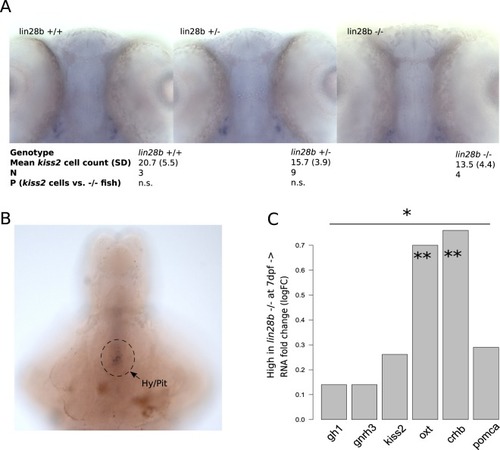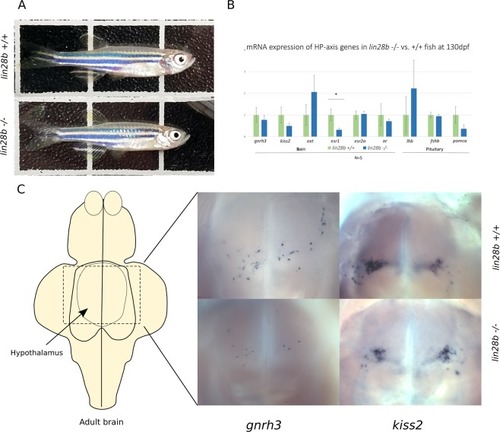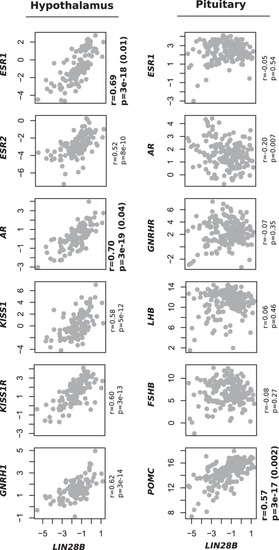- Title
-
LIN28B affects gene expression at the hypothalamic-pituitary axis and serum testosterone levels
- Authors
- Leinonen, J.T., Chen, Y.C., Pennonen, J., Lehtonen, L., Junna, N., Tukiainen, T., Panula, P., Widén, E.
- Source
- Full text @ Sci. Rep.
|
Characteristics and growth patterns of the |
|
Evaluation of the EXPRESSION / LABELING:
PHENOTYPE:
|
|
Summary of the RNA-Seq experiment examining the global RNA expression in the |
|
Inspection of the HP axis of the |
|
|





